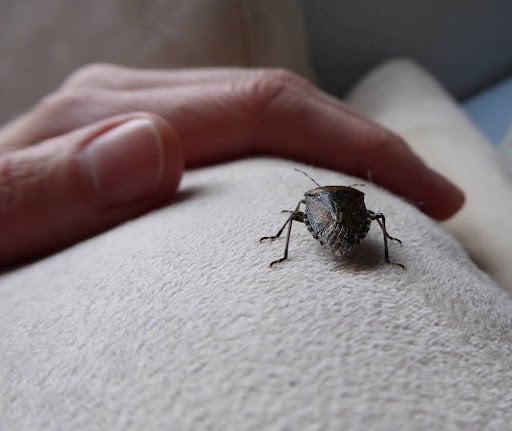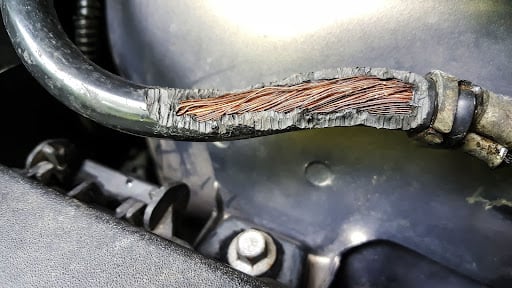Termites are often called the “silent destroyers,” and for a good reason. These small, wood-eating insects can cause significant damage to your home before you even realize there’s an issue. For most homeowners, the thought of a termite infestation is nothing short of terrifying. The truth is that termites are one of the most destructive pests, capable of compromising the structural integrity of your home. But how can you tell if your home is under attack by these wood-destroying organisms? Knowing the signs of a termite infestation can help you catch the problem early, potentially saving you thousands of dollars in repairs.
Understanding these warning signals and knowing when to act is crucial in preventing further damage. In this guide, the Anchor Pest Control team will walk you through the most common signs of a termite infestation so that you can protect your home before it’s too late.
The Dangers of a Termite Infestation
Termite infestations are not just a minor inconvenience but a severe threat to your home. Termites can cause significant damage over time, often before you even notice any signs they’re even there. The impact can be devastating, especially if the infestation involves large termite colonies. Termite damage can weaken the structure of your home, making it unsafe to live in and expensive to repair. This is why termite control and prevention are essential for every homeowner.
Different termite species can cause varying degrees of damage, but they all have one thing in common: their appetite for wood. Subterranean termites and dampwood termites are the most common culprits in termite infestations. Subterranean termites, for instance, build extensive networks of mud tubes to reach their food sources. The longer a termite colony can thrive, the more damage it can cause. If left untreated, a termite problem can lead to structural damage that may require costly termite treatments and even full-scale renovations.
Termite infestations can also be difficult to detect, as termites often hide in places like crawl spaces, wall voids, and behind exterior walls. This is why regular termite inspections are crucial. Our professional termite control services can help identify termites and provide effective termite control solutions to protect your home.
How to Spot a Termite Infestation
Spotting a termite infestation early can save you a lot of trouble down the line. The first step in termite protection is knowing what to look for. One of the most common signs of termite infestation is the presence of termite swarmers. Termite swarmers are winged termites that leave their colony in search of a new place to establish a new colony. If you see swarmers around your home, especially near windows or light sources, it’s a strong indicator that a termite colony may be nearby.
Another sign of termites is the presence of worker termites. These termites are responsible for most of the damage to your home. Worker termites feed on wood and other cellulose materials, leaving behind distinct termite damage. This damage often appears as hollowed-out wood, which can sound hollow when tapped. You might have an active termite infestation if you notice damaged wood or hear a hollow sound when tapping on wood structures.
Termite Frass
Termite frass is another telltale sign that your home may have a termite problem. Frass is a polite term for termite droppings, often mistaken for sawdust or small wood pellets. Finding termite frass around your home, especially near baseboards, window sills, or other wooden structures, strongly indicates a termite infestation. Frass can vary in color, ranging from light beige to dark brown, depending on the wood the termites consume. The presence of frass is a clear sign that termites are active within your home and should not be ignored.
Discarded Wings
Another common sign of a termite infestation is the discovery of discarded wings. After termite swarmers find a suitable location to establish a new colony, they shed their wings. These wings are often found near windows, doors, or other entry points where the swarmers may have entered your home. If you notice piles of discarded wings, it’s a strong indication that termites have already found their way inside and are beginning to establish a new colony.
Discarded wings are typically translucent and may resemble fish scales. They are often found in large numbers, especially during termite swarming season, which occurs in the warmer months. It’s important to recognize that discarded wings are a sign that a termite colony is in the early stages of development. This is the best time to act, as an early intervention can prevent the colony from growing and causing significant damage to your home.
Damaged Wood
Damaged wood is one of the most obvious and concerning signs of a termite infestation. Termites feed on wood from the inside out, leaving behind hollowed-out sections that can compromise the structural integrity of your home. If you notice wood that appears blistering, crumbling, or has an unusual texture, it could be a sign of an active termite infestation.
Termite damage often goes unnoticed until it becomes much more severe. As termites consume the wood, they leave behind thin layers of wood or paint that can easily be punctured. If you notice that the wood around your home sounds hollow when tapped or if you find small holes in the wood, it’s time to take action.
Evidence of Mud Tubes
Mud tubes are a clear sign that your home may be under attack by subterranean termites. These tubes are small, tunnel-like structures made of soil and saliva that termites use to travel between their nest and food source. Mud tubes are typically found on the exterior of your home, especially along the foundation, in crawl spaces, or on walls. Checking for evidence of these tubes during your preliminary termite inspection can help steer you in the right direction.
Subterranean termites rely on mud tubes to maintain their moisture levels and survive. These tubes also protect their whole colony from predators as they move from the soil surrounding your home to the wood they consume. Mud tubes can be easily overlooked, as they often blend in with the soil and other debris around your home. However, they are a crucial indicator of termite activity.
Know When to Call in the Termite Control Experts
Dealing with a termite infestation is not something you should handle on your own. While many DIY termite treatment options are available, such as termite bait systems and termite control products, they are often not enough to fully eradicate a termite colony that pest control companies can offer. Termites are resilient pests that require professional intervention to effectively treat termite infestations and prevent them from returning.
If you’ve noticed any termite infestation signs mentioned above, it’s time to call in the experts at Anchor Pest Control. Our professional pest control company has the experience, knowledge, and tools needed to identify the termite species, assess the extent of the infestation, provide the most effective termite treatments, and prevent termite infestations in the future.
Schedule Your Next Termite Control Service Appointment Today
Termite infestations are a serious threat to the safety and integrity of your home. The signs of a termite infestation can be subtle, but knowing what to look for can help you catch the problem early and take action before it’s too late. Whether you’ve noticed damaged wood, mud tubes, or discarded wings, it’s essential to address the issue as soon as possible.
At Anchor Pest Control, we understand the importance of protecting your home from termites and other wood-destroying organisms. Our team of experienced professionals is dedicated to providing the highest quality residential pest control services to keep your home safe. We offer comprehensive termite inspections, effective termite treatments, and ongoing termite protection plans to ensure your home remains termite-free.


